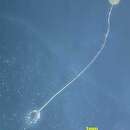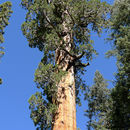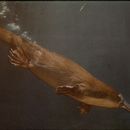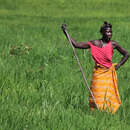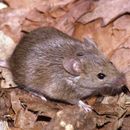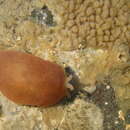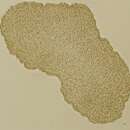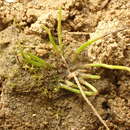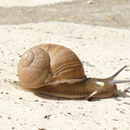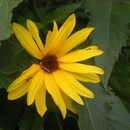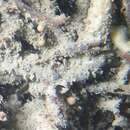Open Tree of Life Project List
This is a Collection in support of the Open Tree of Life Project.
The tree of life links all biodiversity through a shared evolutionary history. This project will produce the first online, comprehensive first-draft tree of all 1.8 million named species, accessible to both the public and scientific communities.
The tree of life links all biodiversity through a shared evolutionary history. This project will produce the first online, comprehensive first-draft tree of all 1.8 million named species, accessible to both the public and scientific communities.
Pages
-
-
…
. Haptophyta|Prymnesiophytes|http://media.eol.org/content/2014/01/21/15/54840_130_130.jpg|Haptophyta is a unicellular division of algae that also goes by the name Prymnesiophyceae or coccolithophorids. Along with having two flagella and in most cases being photosynthetic, the cell membrane of Haptophyta has the appearance of scales. These scales, also known as coccoliths, are made in the endoplasmic reticulum (ER) of the cell and have been shown in the fossil record even before Haptophytes had been discovered. There are about 500 species in the division Haptophyta, with some being marine and others being freshwater species. Haptophytes typically have a golden color. Haptophyta are found around the world and can live in icy cold temperatures or in tropical areas depending on the species. They can form blooms, some of which are toxic and have caused severe environmental problems like suffocating fish by clogging their gills with the algae in areas like Sweden and Norway. These blooms also produce a compound called dimethyl sulfide, which has a particularly potent smell that forces fish to take alternate migration routes. Haptophyta use a flagella-like organelle called a haptonema. Once mistaken to be a third flagellum, the organism will leave the haptonema outstretched to collect food particles. Once a substantial amount of food has been collected, the haptonema will deposit the collected food on the surface of the cell, where the organism will then ingest the food particles through phagocytosis. In some instances, there is an eyespot that is located near the chloroplast. An eyespot functions as a photoreceptor, allowing the organism to sense light intensity. Haptophyta are very closely related to the Cryptomonads, a phylum of unicellular algae. Haptophyta have been found in the fossil record dating back to the Jurassic period.|E -
- Life …
- Eukaryota
- Opisthokonta …
- Fungi …
- Ascomycota …
- Pyronemataceae …
. Scutellinia scutellata|Common Eyelash|http://media.eol.org/content/2012/12/05/00/48193_130_130.jpg|Also known as the common eyelash, Scutellinia scutellata is a reddish-brown mushroom that has been recorded on every continent apart from Antarctica. The common eyelash is 5 millimeters in diameter and prefers a damp habitat such as decomposing wood. Growing in clusters, this fungus is very common in North America and Europe. Scutellinia scutellata gets its name from the small, eyelash-like fringes on the circumference of the reddish-orange head of the mushroom. The purpose of the “eyelashes” is to protect the cap of the mushroom from debris. Scutellinia scutellata produces sexual spores through meiosis that are stored on the top of the fungus. These spores are stored in a sac called an ascus. This distinction typically is found in members of the phylum Ascomycota, or sac fungi.|E -
. Dictyostelium discoideum|Slime Mold|http://media.eol.org/content/2014/01/21/16/66288_130_130.jpg|No Description Available|E
-
. Entomophthora muscae|E. Muscae|http://media.eol.org/content/2013/06/13/14/10540_130_130.jpg|Entomophthora muscae is a species of fungus that is parasitic organism for the order Diptera flies. The name Entomophthora muscae is translated into “insect destroyer of the fly”. The fungus releases a huge number of spores into the air called conidia. Athough only a small number of the spores will be successful in finding a fly host. Once a conidia spore lands on a fly, the fungus will enter through the cracks of the exoskeleton and travel to the brain. Once in the brain, the fungus will affect the mental functions of the fly’s brain, forcing the fly to relocate to high ground. This is why the infected fly will often be seen on high tree branches or in the corners of windows on houses. After the fly has been infected it will live for another five to seven days as the fungus digests the internal organs of the fly. Before the fly passes, it will spread its legs and wings. The purpose of this behavior is to help the fungal spores become airborne. In the fall before cold winter months, Entomophthora muscae will keep its host low to the ground as well as stop producing conidia spores. Instead, it will build up a thick-walled structure around its host to protect itself from the cold. After the winter season, the fungus will resume producing conidia spores. In some cases, Entomophthora muscae is being used as an insecticide, since it targets several species of Diptera flies that are often considered household pests. This organism is prevalent in Great Britain as well as North America.|E
-
. Glomus macrocarpum|G. Macrocarpum|http://media.eol.org/content/2011/11/01/14/11204_130_130.jpg|Glomus macrocarpum is a species of fungi that is considered to be an arbuscular mycorrhizal fungus. This means that Glomus macrocarpum has a symbiotic relationship with vascular plants, which it maintains by penetrating and extending the root system of the vascular plant. This creates a symbiotic relationship between the fungus and the vascular plant, where the plant benefits from an extended root system that allows it to take up more minerals, and the fungus receives carbohydrates from the plant. There have been no successful reports of the fungi being grown apart from a vascular plant host, making this species of fungus an obligate symbiont. The genus Glomus is Latin for the word “ball,” referring to the spherical shape of the fungus. Glomus macrocarpum is considered to be the largest extant species of arbuscular mycorrhizal fungus. Researchers believe that Glomus macrocarpum is the descendant of a genus of mycobiants called Glomites. Like all members of the genus Glomus, Glomus macrocarpum relies on a plant host. In most cases, this relationship is mutualistic, where a nutrient connection develops between the vascular plant and the fungus. Circular yellow spores grow between the root cells of the plant and continue to grow. However some members of the genus Glomus can become parasitic. This species of fungus has been found widely in Poland and distributed randomly in other regions of the world. There is no current evidence that points to Glomus macrocarpum or any members of the phylum Glomeromycota being able to reproduce sexually. Researchers believe that these fungi reproduce asexually, because rates of genetic recombination have been little to nonexistent.|E
-
. Sequoiadendron giganteum|Giant Sequoia|http://media.eol.org/content/2012/08/30/22/38061_130_130.jpg|Sequoiadendron giganteum, also called giant sequoia, is a coniferous evergreen present in California along the Sierra Nevada. Giant sequoias have also been planted in parts of Europe. When fully grown, the giant sequoia can reach heights up to 295 feet (90 meters) and 36 feet wide (11 meters). The oldest giant sequoia recorded was 3,266 years old. Giant sequoia seeds can germinate after two years, though they may be able to germinate after a decade. Today, the conservation status of giant sequoias is listed as vulnerable. Giant sequoia seedlings require bare soil and full sunlight in order to germinate. Since the wood of giant sequoias is very brittle, when giant sequoias are logged, the wood splinters and becomes useless for construction Sequoias require fires to burn the forest floor, which clears material and exposes the bare soil. Only one of three species of the Sequoioideae subfamily to survive the Ice Age, fossils from the Jurassic period suggest that an ancestor of the giant sequoia was present in North America, Greenland, and parts of Europe. After the discovery of the giant sequoia, there was mounting pressure to cut most of these large trees down. Sequoia National Park, the second national park to ever be created in the United States, was created in 1890 to protect the giant sequoias. In the 1970s, giant sequoias were used to repopulate areas of Southern California that had been burned. Today, millions of tourists visit the Sierra Nevada to see witness the beauty and size of giant sequoia trees.|E
-
. Ornithorhynchus anatinus|Duck-Billed Platypus|http://media.eol.org/content/2011/08/04/14/61528_130_130.jpg|The duck-billed platypus, also known under the scientific name Ornithorhynchus anatinus, is a mammalian species native to freshwater streams in Australia. Ornithorhynchus anatinus came from the Greek meaning “duck-like flat-foot”. One of the most unique things about the duck-billed platypus is that it lays eggs, making it one of only five mammalian species worldwide with this reproductive method. The other egg-laying mammals are four species of spiny anteaters also called echidna. The duck-billed platypus has a very sensitive bill with electroreceptors that it uses to hunt for food in the water. Platypuses hunt for food at night and sleep during the day in their burrows built on land. Platypuses hunt crayfish, insects, tadpoles, and small fish. The platypus has very strong legs it uses for swimming, as well as webbed feet with claws that help the platypus swim and protect itself. Male platypuses have a venom gland on the back of their legs that is believed to be used against other males during mating season. The male platypus venom causes intense pain and is strong enough to kill a dog or seriously injure a human. The duck-billed platypus is the only remaining living species of platypus. Platypuses are related to both mammals and reptiles. For instance, the platypus has splayed legs, which is a feature found distinctly in reptiles, but their bones also can rotate in their sockets, which is a mammalian feature. Platypuses also have a bone located near the collarbone called an interclavicle that is usually only found in reptiles. Socially, platypuses are solitary animals that hunt alone. Males do not assist the mother in raising the young, and as soon as the young are able to hunt for themselves, they go out on their own. Typically living to about 18 years in the wild, platypuses become sexually mature around four years old. Predators of the duck-billed platypus include foxes, crocodiles, as well as large fish and birds. Humans hunted platypuses until an Australian law was passed in 1912 to protect the species.|E
-
- Life …
- Eukaryota
- Opisthokonta
- Metazoa …
- Deuterostomia …
- Vertebrata …
- Tetrapoda …
- Synapsida …
- Cynodontia
- Mammalia …
- Primates …
- Hominidae …
. Homo sapiens|Human|http://media.eol.org/content/2012/06/12/20/92537_130_130.jpg|Originating about 200,000 years ago, Homo sapiens derived from the latin meaning “wise man”. Also known as modern humans, Homo sapiens are closely related to chimpanzees and gorillas. The difference between earlier humans and modern humans is the lighter shape of the skull along with smaller teeth and a lighter jaw. Evolving from archaic humans in East Africa, earlier forms of modern humans are called “anatomically modern Homo sapiens.” Humans can be found in all terrestrial habitats worldwide, including Antarctica. Humans use bipedal locomotion, or walking on two feet, to move around. Humans have very large brains, about 1300 cubic centimeters, which accounts for increased mental abilities. Homo neanderthalensis, also known as neanderthals, are genetically the closest relative to humans and had a brain size slightly larger than the human brain. Humans are typically omnivores; however they also use fungal colonies such as yeast for a food source. Homo sapiens developed agriculture about 10,000 years ago. Humans have a wide variety of mating practices. The gestation period of humans is approximately 40 weeks. One of the most unique attributes of Homo sapiens is behavioral changes that separate them from other primate species, such as broad range of prey and use of tools. Neanderthals are the only species other than humans to display behavior such as marking the graves of their dead.|E -
- Life …
- Eukaryota
- Opisthokonta
- Metazoa …
- Deuterostomia …
- Vertebrata …
- Tetrapoda …
- Synapsida …
- Cynodontia
- Mammalia …
- Rodentia …
- Muridae …
. Mus musculus|House Mouse|http://media.eol.org/content/2013/02/03/11/16311_130_130.jpg|Mus musculus, also known as the house mouse, is a member of the order Rodentia. Native to Central Asia, the house mouse was accidently introduced to North America through the settlers. House mice live in close association with humans, typically taking up residence in parts of houses and buildings as well as outdoors in fields or amongst crops. House mice weigh about half of an ounce and can be up to 7 inches long, including the 3-4 inch tail. Though nocturnal creatures, house mice can be seen during daylight hours scavenging for food. The incredible reproductive system of house mice can produce up to 13 litters per year, with each litter containing 6 mouse pups. House mice collect scraps of paper or other materials they can get ahold of to create a nest in a sheltered location. Capable of surviving in small areas with limited food and water, house mice have adapted well alongside humans. House mice eat grasses as well as some small insects, as well as glue and soap, but alongside humans, house mice will eat anything that humans eat. House mice are used for biological and scientific experiments because of their fast reproductive systems, especially in mammalian research. House mice can help diseases such as murine typhus, rickettsial pox, tularemia, salmonella, and bubonic plague spread to humans. To prevent house mice from entering human areas, eliminate any holes or gaps in which the mice could squeeze in through. The small size of house mice makes preventative measures fairly difficult. Areas with poor sanitation attract house mice. House mice are capable of surviving in desert and tundra areas that they normally would not be capable of living in without dependency on humans.|E -
- Life …
- Eukaryota
- Opisthokonta
- Metazoa …
- Deuterostomia …
- Vertebrata …
- Tetrapoda …
- Synapsida …
- Cynodontia
- Mammalia …
- Ruminantia
- Bovidae …
. Bos taurus|Domestic Cattle|http://media.eol.org/content/2013/06/28/15/42564_130_130.jpg|Bos taurus, also known as domesticated cattle or cows, are found throughout most of the world. With the largest population of cattle being in India at 281 million, Bos taurus is derived from the Latin meaning “personal moveable property”. Domestic cattle have arisen from 80 ancestors 10,500 years ago in parts of Turkey and Iraq. Since then, the world population of Bos taurus is about 1.3 billion. Weighing about 600 to 1000 pounds and covered with short hair in black, white, reddish brown, or brown, cows are about 50 inches in height. Cows also have spot patterns in their hair, with no two cows having the same pattern of spots. Cows have a 60 degree depth perception compared to the 180 degree depth perception of humans. They are unable to see the colors red or green. Typically cows have a lifespan of 20 years and become sexually mature after one year. Cows are social animals who live in herds for protection. Cows are able to digest tough material by cutting grass with their bottom teeth and having a stomach with four compartments to break down tough plant material with digestive enzymes. Cattle share 80 percent of their genes with humans. Cows also share 1000 genes with dogs and rodents, though none of which are found in the human genome. Humans use cows for multiple purposes, including a food source (beef, veal, and dairy products), creation of leather, dung used for fuel and manure, and to perform physical labor. Male cows, also called bulls, are used in bullfighting and rodeos. Cows can carry Bovine Spongiform Encephalopathy, also called “Mad Cow Disease”, which can be spread to humans through their meat. Bovine Spongiform Encephalopathy causes degeneration of the brain and is fatal in both cows and humans. The United States Food and Agriculture Administration says that 18% of greenhouse gas emissions are due to livestock.| E -
. Cryptophyta|Cryptomonads|http://media.eol.org/content/2014/01/21/15/90860_130_130.jpg|Cryptophyta are a phylum of unicellular algae that are oval-shaped with two flagella. Cryptophyta, also recognized by the name Cryptophytes, are mostly photosynthetic organisms that produce their own food, but some species are heterotrophic and will obtain food from another source, similar to humans. Some Cryptophytes are even considered mixotrophs, meaning they obtain energy from more than one source. Cryptophytes have one flagellum that is longer than the other. The longer flagella will have two rows of mastigonemes, or short hairs that assist in movement. Cryptophyta are said to resemble Russian dolls by the fact that one large cell encompasses four smaller organisms. There are freshwater and marine species of Cryptophyta, and in the spring the species may produce blooms that are visible in the Chesapeake bay, arctic, Great Lakes and Antarctic. These organisms can appear green, red, blue, or olive in color and are typically very small. Cryptophyta have a nucleus located at the back end of the cell, while the contractile vacuole where food is taken in and wastes are removed is located at the front of the cell. One interesting fact about Cryptophyta is that along the tubular gullet the organism has ejectosomes, or ribbon-like organelles that are rolled up and will expel all of the material inside the cell if the organism is under any form of stress. The Cryptophytes are similar in cell structure and color to a phylum of sometimes parasitic organisms called dinoflagellates. Cryptophytes do not have a cell wall or spindle fibers that are normally present during mitosis of the cell. Organisms that hunt Cryptophytes include dinoflagellates and plankton. Cryptophyta reproduce mainly asexually, although sexual reproduction has just recently been documented in a few species.|E
-
. Oscarella carmela|Slime Sponge|http://media.eol.org/content/2010/03/30/04/51615_orig.jpg|Oscarella carmela, commonly known as the slime sponge, is a species of sponge in the order Homosclerophorida that was first described in 2004 by G. Muricy and J.S. Pearse. It is believed to be native to intertidal waters in the north east temperate Pacific Ocean and was first found in seawater aquaria in that region. It is used as a model organism in evolutionary biology.Oscarella carmela is either encrusting or massive and forms a slimy covering or a thicker layer of spongy matter with an uneven, lumpy, lobed surface. It grows in patches on hard substrates up to 20 to 30 cm (8 to 12 in) in diameter and overgrows other organisms. The colour is variable and ranges from orange-brown to tan or beige. This sponge does not contain spicules or spongin to reinforce its body wall and has a simple structure with only two types of cell with inclusions.|E
-
. Trichoplax adhaerens|Placozoan|http://media.eol.org/content/2011/10/06/00/68458_130_130.jpg|Trichoplax adhaerens is an early invertebrate and is considered to be one of the simplest organisms in the kingdom Animalia. What these animals eat and where they live have yet to be discovered, as this organism has never been found in its natural habitat. Trichoplax adhaerens were first discovered in 1883 inside of a laboratory aquarium. The cell body of Trichoplax adhaerens is composed of about 1000 cells with only three cell layers. Its body structure is only made up of four types of cells: cylinder cells that include cilia, gland cells, cover cells located towards the outer region of the organism that also include cilia, and fiber cells that are star-shaped and tend to stretch between the inner and outer layers of the organism. Trichoplax adhaerens is transparent, flat and round. The organism can move around via cilia or by changing its shape. Trichoplax adhaerens will eat Cryptomonas and Chlorella when kept in labs or cultures. The organism has no record of sexual reproduction, but instead will reproduce asexually through binary fission or budding. As only one of two species under the phylum Placozoan, Treptoplax reptans and Treptoplax reptans are considered the “missing link” species that may give more insight to the evolution of animals. The other species under Placozoans, Treptoplax reptans, is speculated to actually be Trichoplax adhaerens. This would technically make T. adhaerens the only species of its phylum. |E
-
. Anthoceros agrestis|Field Hornwort|http://media.eol.org/content/2013/09/13/13/80280_130_130.jpg|Anthoceros agrestis, also known as field hornwort, is a plant species native to the United Kingdom, but has also been found along the east coast of the United States. This aquatic perennial is considered to be an herb and prefers living in damp fields and marshy grasslands. At one time, before plant classifications had become more sophisticated, Anthoceros agrestis and Anthoceros punctatus were commonly mistaken for one another. Anthoceros agrestis has green shoots called thalli that are frilly and circular, as well as about 3 centimeters wide. The flowers of Anthoceros agrestis are unisexual. Anthoceros agrestis has no roots because it lives in an aquatic location. |E
-
. Caenorhabditis elegans|Nematode|http://media.eol.org/content/2013/10/31/00/36381_130_130.jpg|Caenorhabditis elegans is a species of non-parasitic multicellular roundworm that lives in most areas of the world. This one millimeter long eukaryotic organism consumes bacteria such as E. coli, and can be found in soils with adequate moisture and oxygen as well as decomposing plant life. Caenorhabditis elegans has no females; instead, the species comprises of mostly hermaphrodites that can self-fertilize and males. Male Caenorhabditis elegans make up a very small percentage of the total population. Caenorhabditis elegans hermaphrodites reproduce by self-fertilization, which results in offspring genetically identical to the parent. However, hermaphrodites can also mate with males, which results in offspring with combinations of genes from both parents. About 12 hours after the eggs have been fertilized, they will hatch. Caenorhabditis elegans have a total lifespan of two to three weeks. Caenorhabditis elegans have a nervous system, and like some nematodes, C. elegans does not have a segmented body structure. In 1963, Caenorhabditis elegans was introduced into the scientific community as an ideal organism to be used for research. This nematode is still being used today in research, especially for genetics testing and is commonly referenced to as ‘the worm’. Since the organism reproduces in large numbers with one hermaphrodite producing up to 350 eggs at one time, it is easier to use the organism to test the application of one gene. Caenorhabditis elegans was also the first multicellular organism to have its genome completely sequenced. About 40 percent of the Caenorhabditis elegans genome is homologous to the human genome. This similarity in genome between Caenorhabditis elegans and Homo sapiens could indicate a common ancestor. In a study conducted by University College London, Caenorhabditis elegans was used to study cell death. In the study, the death of one Caenorhabditis elegans triggered a calcium chain, eventually spreading through the rest of the organism and according to David Gems, co-author of the study, the death of the neighboring cell is triggered.|E
-
. Helix aspersa|Garden Snail|http://media.eol.org/content/2012/01/25/03/95594_130_130.jpg|Also known as garden snail or common brown European snail, Helix aspersa is a smaller pale brown snail from the phylum Mollusca. The garden snail’s shell is dark brown and round with a spiral towards the center of the shell. Garden snails are nocturnal and typically do not emerge into the daylight unless it is raining. Their diets consist largely of plants, fruits, dead animal tissue, and paper products. Garden snails are considered a pest in many gardens, as they consume most vegetation. Plants that grow low to the ground are reported to get the most damage, as they are easier for garden snails to get to. However, height does not deter garden snails from climbing to higher plants in search of food. Like all snails, the garden snail is hermaphroditic, meaning that one snail has both male and female reproductive organs. Though garden snails can self-fertilize, they mostly reproduce through mating with another snail. When two garden snails mate, each snail will produce and lay eggs, which will hatch within two to four weeks. Garden snails can have up to 430 offspring in one year. It takes about two years for a garden snail to mature into an adult. Garden snails are edible to humans. Snail farms, which have risen in popularity in Great Britain, are largely successful. Native to Europe, South Africa and Turkey, garden snails were introduced to the United States and have proliferated there.|E
-
. Crassostrea gigas|Giant Oyster|http://media.eol.org/content/2012/02/08/02/08962_130_130.jpg|Crassostrea gigas, also known as Pacific oyster or giant oyster, is a mollusc native to Southeastern Asia and the marine waters of Japan. Pacific oysters have been introduced to different areas around the world to be farmed. They oysters have white shells with some purple streaks. The inside of the shell is white with no other coloring. The pacific oyster is very similar to another species under the same genus. Since pacific oysters can attach themselves to any hard surface, it makes it difficult to exclude the species in any aquatic environment. Pacific oysters will attach themselves to any hard substrate or even to other oysters. The organisms live in the intertidal zone of the Pacific Ocean. Pacific oysters can change sex during their lives, usually affected by environmental factors. Some oysters are hermaphroditic, meaning they have both female and male reproductive organs. During the breeding season, the reproductive organs of male and female pacific oysters compose about 50 percent of their mass. Female pacific oysters can produce up to 30 to 40 million eggs per spawning. The larvae of pacific oysters are free-swimming until they reach a hard surface to grow on. The two valves that enclose the oyster are unequal in size, with the lower valve being more convex and also In some marine environments, pacific oysters exclude the native marine species by limiting the food supply or available space.|E
-
- Life …
- Eukaryota
- Archaeplastida …
- Angiosperms …
- Asteraceae …
. Helianthus annuus|Common Sunflower|http://media.eol.org/content/2012/01/25/03/79816_130_130.jpg|Also known as the common sunflower, Helianthus annuus is derived from the greek words “helios” meaning sun and “anthos” meaning flower. The common sunflower can range from 1.5 feet to 8 feet tall (0.5-2.4 meters). Common sunflowers are native to dry, open spaces and require full sun. They are known for following the sun, starting from the east and by the end of the day, facing the west as the sun sets. The common sunflower has a large flower with bright yellow petals. In the center of the flower are thousands of brown flowers called “florets” that bear no petals. Flowers of the common sunflower bloom between the months of July to October. The seeds of sunflowers are devoured by many species of wild birds. The seeds, which contain 25-32 percent oil, are used to make sunflower oil. Sunflower oil is used as frying oil as well as an ingredient in cosmetics. Russia is the world’s largest sunflower oil producer. Sunflowers only live for one season and are considered to be annuals. The stems of sunflowers have hairy bristles that prevent water loss. Sunflowers can be found in all 50 states as well as parts of Canada. Sunflowers are tolerant of both high and low temperatures, and prefer wet, disturbed areas to grow in. Sunflower petals are sometimes used to create yellow dye. Many variants of the common sunflower have been developed through cross-breeding and hybridization.|E -
-
…
. Opuntia ficus-indica|Prickly Pear| http://media.eol.org/content/2011/10/16/01/51163_130_130.jpg|Opuntia ficus-indica, also known as barbary fig or prickly pear, is a cactus crop that is found in Texas, New Mexico, Arizona, California, Florida, Georgia, Hawaii, North Carolina, the Mediterranean and Puerto Rico. Plants in the Opuntia family are often referred to as 'succulents' because of their overly-thick leaves and stems which are used to store water. The prickly pear is about 15 feet tall (4.5 meters) and about 10 feet wide (3 meters). The cactus has large pads about 10 inches long and some spikes. Yellow or orange flowers grow on these pads and blossom in spring or early summer months. The prickly pear needs full sun, and if water is scarce, the pads of the prickly pear will shrivel in order to conserve water. Both the fruit and pads of the prickly pear cactus are edible, and the sweet purple fruit of the prickly pear, also known as 'tunas', is sold in markets worldwide. Some dishes that are made with prickly pear pads include putting the pads in salads, grilling the pads and serving them with eggs, or using the pads for soups.|E -
. Gromia oviformis|G. Oviformis|http://media.eol.org/content/2010/12/04/04/84184_130_130.jpg|Gromia oviformis is a common unicellular eukaryote that can be found in the intertidal regions of the British Isles, Western Europe, and on the coast of California. This eukaryote was once researchers are looking in to how Gromia oviformis, a European species of Rhizopoda, made its way to the coast of the United States. Gromia oviformis is spherical in shape and has a transparent test, or a shell found in microorganisms. The organism can range from brown to grey in color. Gromia oviformis has a collar that encircles the oral opening of the organism that catches food and debris. The oral opening itself can be from a half a millimeter to a millimeter wide, while the entire body is about three millimeters in diameter. The oral opening has a ring with villi, though researchers are still looking into how the oral opening works. Gromia oviformis has a very strong ability to attach itself to a substrate, which is useful in intertidal regions, otherwise the organism could be swept away by ocean currents. |E
No other collections are associated with this one. You can click on the "associate" button on other collections to have them appear here.



